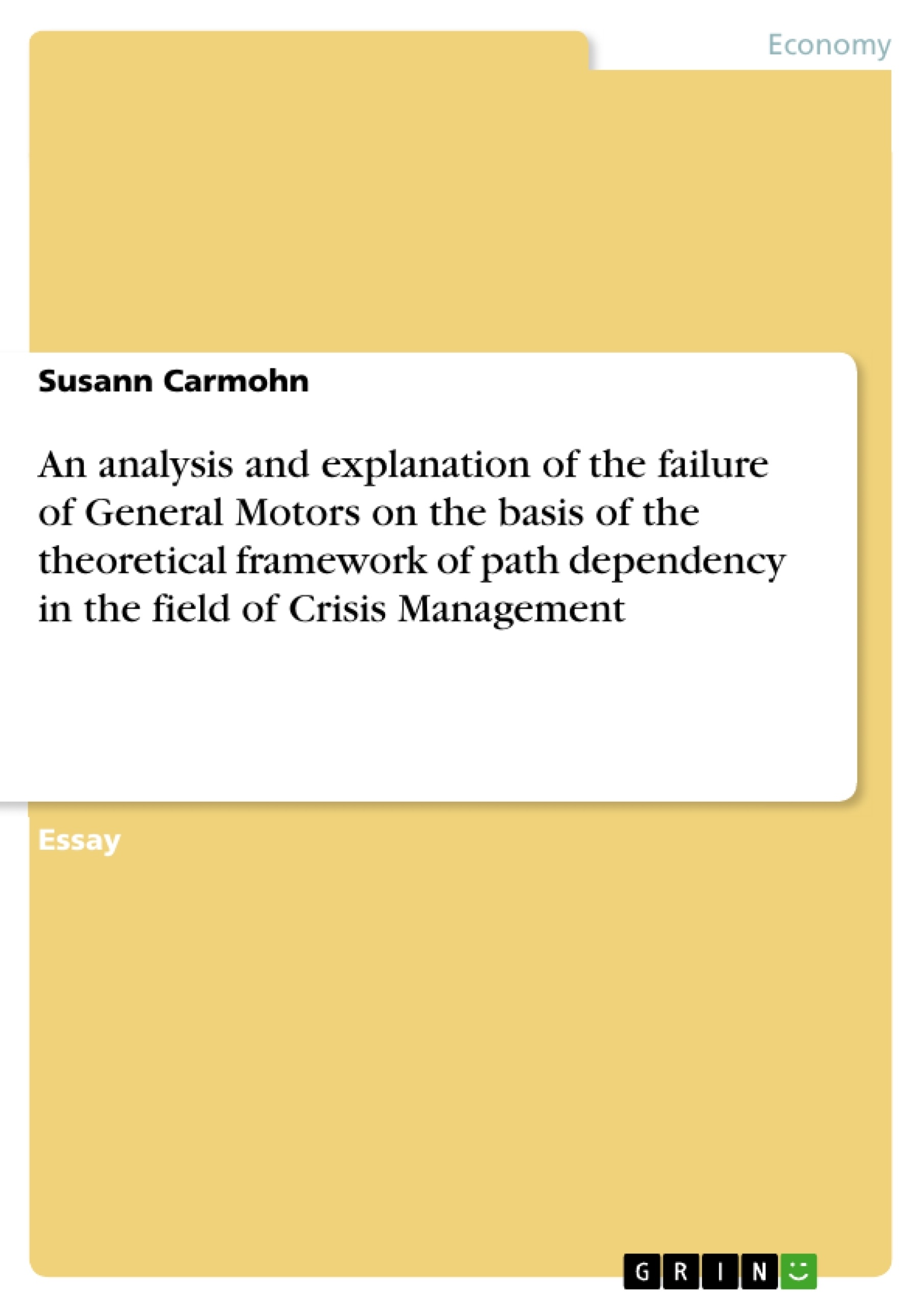The difficulty lies, not with the new ideas, but in escaping the old ones.
John Maynard Keynes
This essay explores with the theory of path dependence why some organizations stick to in the long run loss-generating strategies and why do some companies miss to develop new strategies to adapt to changing market conditions. Path dependence can be defined as a dynamic theory assuming that initial events can increasingly restrain present and future choices. Due to the current market situation this essay will connect the theoretical considera-tions of path dependency with the crisis management. On the basis of the main literature and with applying the theoretical model of Burgelman it will be examined in how far does the model of path dependency explain the failure of the insolvent automobile manufacturer Gen-eral Motors. In this regard some limitations of the Burgelman-model were discovered.
Inhaltsverzeichnis (Table of Contents)
- Introduction
- Problem outline and objective
- Course of work
- Theoretical Background
- Crisis Management
- The strategic process as aperiodicity: induced vs. autonomous strategic action
- Path dependency and the basic concept of strategic paths
- Strategic Consequences of co-evolutionary Lock-In
- The application of Burgelman's insights on the example of General Motors
- Recommended Procedures for GM
- Critical Reflection
- Critical reflection of the path dependence theory
- Limitations of Burgelman and recommendations
- Conclusion
Zielsetzung und Themenschwerpunkte (Objectives and Key Themes)
This essay aims to explore the concept of path dependency and its application in crisis management, specifically analyzing the failure of General Motors. It examines how path dependency can explain why organizations may stick to loss-generating strategies and fail to adapt to changing market conditions. Key themes explored in this work include: * **Path dependency:** How past decisions and events can influence future choices and strategies, potentially leading to lock-in effects. * **Crisis management:** The application of path dependency theory in the context of organizational crises and how it relates to strategic responses. * **Strategic decision-making:** The analysis of how path dependency influences strategic choices and the potential consequences of failing to adapt. * **Case study of General Motors:** The application of the theoretical framework of path dependency to understand the failure of General Motors and identify contributing factors. * **Limitations and recommendations:** A critical reflection on the limitations of path dependency theory and potential recommendations for addressing these limitations.Zusammenfassung der Kapitel (Chapter Summaries)
* **Introduction:** This chapter sets the stage by outlining the problem addressed in the essay, which is the failure of General Motors. It also states the essay's objective to analyze this failure through the lens of path dependency theory. * **Theoretical Background:** This section introduces the relevant theoretical concepts, including crisis management, strategic process aperiodicity, and the core principles of path dependency. * **Strategic Consequences of co-evolutionary Lock-In:** This chapter applies the concept of path dependency to the case of General Motors, demonstrating how the company's strategic decisions were influenced by past choices and market conditions. * **Critical Reflection:** This chapter engages in a critical examination of path dependency theory, highlighting its limitations and suggesting potential recommendations for improving its application. * **Conclusion:** This chapter summarizes the key findings of the essay, drawing conclusions regarding the applicability of path dependency theory to the failure of General Motors and offering final insights.Schlüsselwörter (Keywords)
This essay focuses on the core concepts of path dependency, crisis management, strategic decision-making, and the case study of General Motors. It examines the limitations of path dependency theory and suggests potential recommendations for its application in organizational analysis. Key terms and concepts include path dependency, strategic inertia, lock-in effects, crisis management, co-evolutionary lock-in, strategic decision-making, and case study of General Motors.- Quote paper
- Susann Carmohn (Author), 2010, An analysis and explanation of the failure of General Motors on the basis of the theoretical framework of path dependency in the field of Crisis Management, Munich, GRIN Verlag, https://www.grin.com/document/151790



